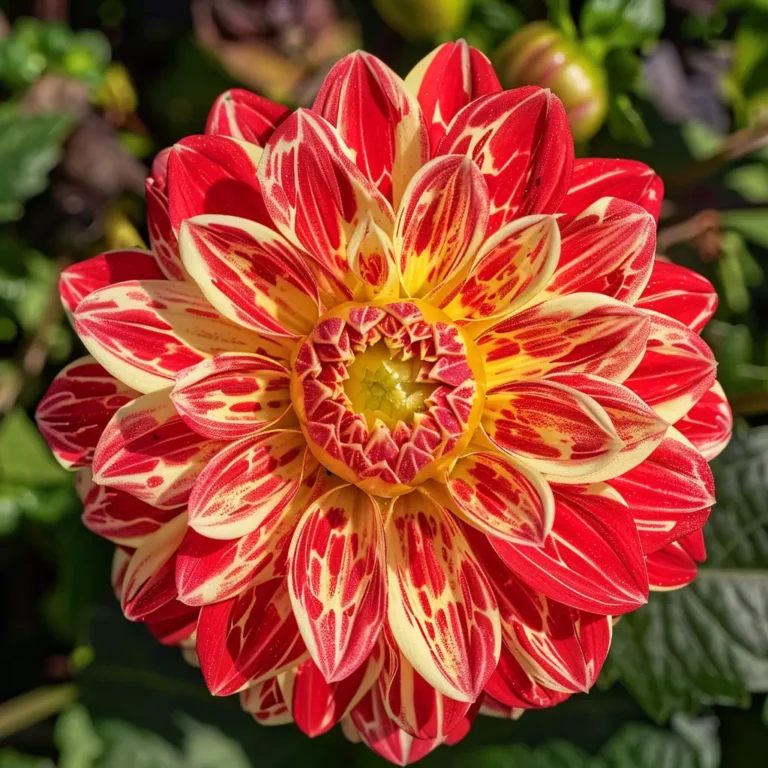Introduction
The Firework Dahlia is a stunning addition to any garden, known for its vibrant blooms and unique patterns. This article will delve into everything you need to know about growing and caring for Firework Dahlias, ensuring your garden is a burst of color throughout the blooming season.
History and Origin
Dahlias are native to Mexico and were first cultivated by the Aztecs for their edible tubers. The Firework Dahlia variety, with its spectacular display of colors, has become a favorite among gardeners worldwide. This variety was introduced as part of efforts to create more visually striking garden plants.
Description of Firework Dahlia
Firework Dahlias are known for their striking blooms that resemble fireworks in full explosion. They have:
- Vibrant petals with a mix of colors
- Height ranging from 3 to 4 feet
- Blooms that are perfect for cutting and floral arrangements
The petals often display multiple colors, creating a firework-like effect that makes them stand out in any garden.
Growing Conditions
For Firework Dahlias to thrive, they require specific growing conditions:
- Soil: Well-draining soil rich in organic matter is ideal.
- Light: Full sun for at least 6 hours a day.
- Water: Regular watering, ensuring the soil remains moist but not waterlogged.
- Climate: They prefer a warm climate with temperatures ranging from 60-70°F (15-24°C).
Planting and Propagation
Planting Firework Dahlias is straightforward:
- Planting: Best done in late spring after the last frost.
- Propagation: Can be done via seeds, tubers, or cuttings.
To plant the tubers:
- Dig a hole about 6-8 inches deep.
- Place the tuber in the hole with the growing points facing up.
- Cover with soil and water thoroughly.
Maintenance and Care
Caring for Firework Dahlias involves several key steps:
- Pruning and Deadheading: Regularly remove spent blooms to encourage new growth.
- Fertilization: Use a balanced fertilizer every 4-6 weeks during the growing season.
- Pest and Disease Management: Watch out for common pests like aphids and slugs. Use organic pesticides if necessary.
- Overwintering: In colder climates, dig up the tubers after the first frost and store them in a cool, dry place.
Varieties and Hybrids
There are several popular varieties of Firework Dahlias:
- Dahlia variabilis ‘Fireworks Mixed’
- Dahlia ‘Fireworks Red’
- Dahlia ‘Fireworks Yellow’
Each variety has its unique color pattern and growth characteristics, making them a versatile choice for gardeners.
Uses in Landscaping
Firework Dahlias are excellent for:
- Garden beds and borders: They add a splash of color and height.
- Containers: Perfect for patios and small gardens.
- Companion planting: They pair well with plants like marigolds and cosmos.
Benefits of Firework Dahlia
Firework Dahlias offer several benefits:
- Ecological Benefits: Attract pollinators like bees and butterflies.
- Aesthetic Value: Their vibrant blooms enhance garden beauty.
- Cut Flowers: Ideal for floral arrangements and bouquets.
FAQs
What is a Firework Dahlia?
A Firework Dahlia is a variety of Dahlia known for its vibrant, multi-colored blooms that resemble fireworks.
How do you care for Firework Dahlia?
Care involves regular watering, fertilization, and deadheading. Overwintering is necessary in colder climates.
When is the best time to plant Firework Dahlia?
The best time to plant is in late spring after the last frost.
Can Firework Dahlia be grown in pots?
Yes, Firework Dahlias can be successfully grown in pots with proper care.
How to propagate Firework Dahlia?
Propagation can be done through seeds, tubers, or cuttings.
Conclusion
The Firework Dahlia is a spectacular addition to any garden, offering vibrant colors and a unique appearance. By following the tips and guidelines outlined in this article, you can enjoy the beauty of Firework Dahlias throughout the growing season.

